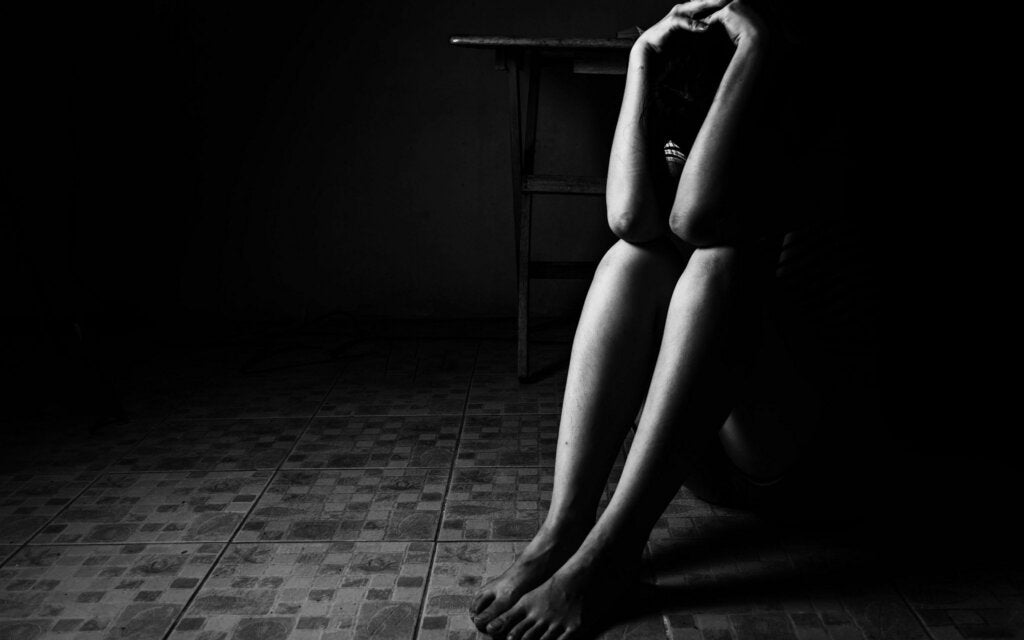The paradoxical adaptation to domestic violence syndrome (PADVS) is a recent psychopathological concept. It involves a contradictory phenomenon. In fact, it concerns the fact that people who are victims of aggression by their spouse end up feeling that their aggressor is actually protecting them.
There are disturbing rates of domestic violence almost everywhere in the world. Men remain the main aggressors. However, there are also women who violate their partners. As a matter of fact, cases of assault against men tend to be less visible, but are known to exist and, possibly, are on the increase.
“In the face of atrocities we have to take sides. Silence stimulates the executioner.”
-Elie Wiesel-
PADVS encompasses couples of all genders, including homosexuals. In most cases, the violence occurs at the intimate level and never reaches the judicial authorities or the professionals’ offices. Therefore, it’s not possible to know how many people are victims of these kinds of situations.
Domestic violence
Domestic violence is a complex phenomenon because it involves many contradictory feelings. On some occasions, the situation leads to separation. As a rule, this is when the victim realizes that the bond has irretrievably deteriorated and that there’s no alternative but to break it.
However, this doesn’t always happen. In fact, according to Andrés Montero Gómez, who proposed the theory of PADVS, there are three factors that lead to prolonging this type of situation. At the same time, they become a breeding ground for PADVS. They are:
- Intense fear, which leads to paralyzing processes in the victim.
- The victim perceives their whole situation as one in which there’s no way out. Therefore, they think it’s impossible to escape the aggression.
- A lack of resources. They don’t have their own resources or a source of support that can provide them.
The above corresponds to a typical instance. However, this isn’t always the case. In fact, paradoxical adaptation to domestic violence syndrome also occurs in people who are apparently independent and who have ways of escaping the situation.
Paradoxical adaptation to domestic violence syndrome
There’s one common denominator in couples where violence takes shape and becomes an essential part of the bond. It’s the fact that, from the beginning, there’s an imbalance of power. This could be emotional, social, or material. In fact, it seems to be an essential condition for abuse to later occur.
Paradoxical adaptation to domestic violence syndrome is a psychophysiological reaction in people who are victims of domestic violence. It involves a series of cognitive and emotional modifications. The victims use them with the intention of coping with or surviving the situation. In principle, it’s an adaptation mechanism. However, in these cases, it occurs when individuals are faced with an intolerable situation.
This condition is considered a variant of Stockholm syndrome. In both cases, apparently loving feelings are felt toward the aggressor. This is because they compare the damage perpetrated with the potential damage. Consequently, they conclude that they’re receiving a benefit, as things could be so much worse.
The cycle of abuse

This type of situation doesn’t happen overnight but is the result of a long process. There are usually four phases:
- Triggering phase. This takes place when the traumatic scenario first appears. In other words, when the victim is physically attacked for the first time. This destroys their security and trust in their partner and the first signs of danger appear.
- Reorientation phase. First, the victim feels disorientated and uncertain. That’s because the rules of the game have changed. Furthermore, they feel increasing anxiety, guilt, and shame. In addition, they start to reconsider their beliefs about their partner. In fact, they’re searching for a balance to compensate for their fear.
- Coping phase. The victim contrasts the challenges of the situation with their personal resources. They start to feel depressed and stressed. Their tolerance to pain increases and their sensitivity is reduced. They exhibit passive resistance.
- Adaptation phase. The psychophysiological deterioration leads the victim to submit progressively to the conditions of aggression. Their feelings of inferiority lead to a ‘traumatic identification with the aggressor’.
Once this process is completed, PADVS occurs. The victim ends up protecting themselves through a modification of their attitude towards the aggressor. Thus, the rejection becomes a kind of plea for protection. In effect, the aggressor is thanked for not inflicting more pain than they already have on their partner.
The post Paradoxical Adaptation to Domestic Violence Syndrome appeared first on Exploring your mind.



















Comments